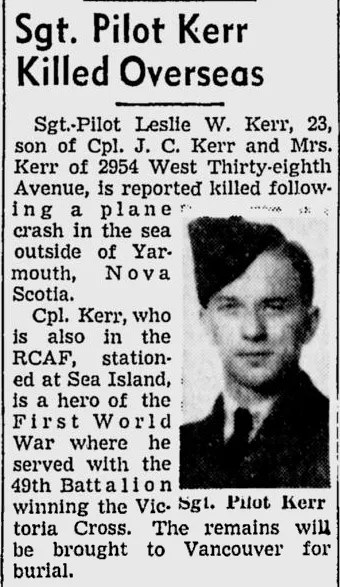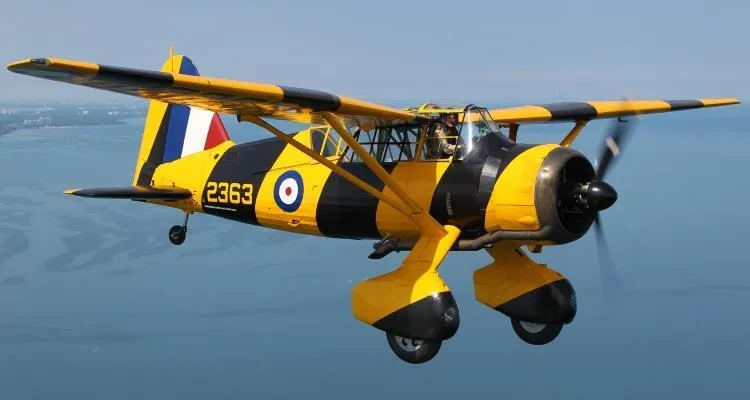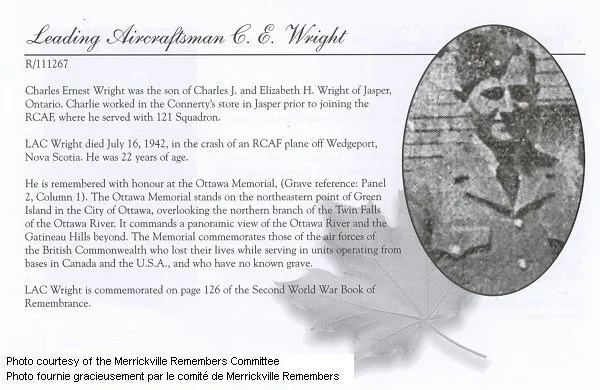Kerr, Leslie Walter (Sergeant)
Killed in Action 1942-07-16


Birth Date: 1919-July-09
Born:
Son of John Chipman Kerr, V.C., and Clarissa Gertrude Kerr, of Vancouver, British Columbia.
Home: Spirit River, Alberta
Enlistment:
Enlistment Date: Unknown
Service
RCAF
Unit
121 Sqn- Squadron
Base
Rank
Sergeant
Position
Sergeant
Service Numbers
R/61046
This incident involved multiple aircraft:
- Lysander Mk. II TT Serial: 466
All the above aircraft in the above list are referenced in this report.
Westland Lysander

Canadian Warplane Heritage Museum
Westland Aircraft of Yeovil, UK, started to design an Army Cooperation aircraft for the British Air Ministry, in June 1935. The first Lysander flew a year later and demonstrated a remarkable short field performance that today would be seen in a STOL aircraft. At the outbreak of war in September 1939, seven RAF squadrons equipped with Lysanders were sent to France in support of the British Army. In May-June 1940, 118 Lysanders were destroyed in action and 120 aircrew were killed or taken prisoner. These severe losses showed that the old ideas about army support aircraft were out of date and the future lay in fighters like the Hurricane.
The most daring use of Lysanders in WW II was with the Special Operations Executive, which supported the Resistance in German occupied France and Belgium, by flying in agents and picking up escapees. It was during these night operations, that the Lysander came into its own, using its remarkable STOL capabilities to fly into the small fields marked out by the Resistance.
The first Canadian built Lysanders rolled out of National Steel Car factory at Malton, Ontario in September 1939 and later were delivered to RCAF No. 110 (Army Co-operation) Squadron at Rockcliffe, Ontario. In February 1940, No. 110 became the first RCAF squadron to be ordered overseas to Britain, becoming No. 400 Sqn..
By late 1941, most Canadian built Lysanders had been transferred to the British Commonwealth Air Training Plan (BCATP), where they were used for target towing at gunnery training schools. National Steel Car, which became Victory Aircraft, stopped building Lysanders in September 1942, as it started to gear up to manufacture Lancaster bombers. 1,652 Lysanders were built between 1938 and 1943; 225 of them in Canada. Lysanders served with the RAF, RCAF and the RAAF, as well as the air forces of seven other nations.Canadian Warplane Heritage Museum
Lysander 466
Lysander Mk. II TT 466
Assigned directly to Eastern Air Command stored reserve in Yarmouth, Nova Scotia, in 1941. Assigned to No. 121 Composite Sqn in Dartmouth, Nova Scotia, as of 16 Mar 1942 for target towing duties. Struck off, after Category "A" crash at Dartmouth, Nova Scotia, on 16 July 1942. For unknown reasons, the a/c crashed into the water in Goose Bay near Wedgeport, Nova Scotia. Flight Sergeant L.W. Kerr and Leading Aircraftman C.E. Wright were both killed. The a/c was later salvaged.1941-03-13 Taken on Strength 2019-08-20
1942-July-16 Accident: 121 COMPOSITE Loc: Wedgeport Nova Scotia Names: Kerr | Wright
1942-07-16 Accident Category A 2022-01-22
1942-10-09 Struck off Strength written off 2022-01-22
 Spirit River, Alberta
Spirit River, Alberta Canadian Virtual War Memorial
Canadian Virtual War Memorial Commonwealth War Graves Commission
Commonwealth War Graves Commission www.findagrave.com
www.findagrave.com
 Lysander
Lysander Wikipedia Lysander
Wikipedia Lysander Harold A Skaarup Web Page
Harold A Skaarup Web Page Lysander - Kestrel Publications
Lysander - Kestrel Publications